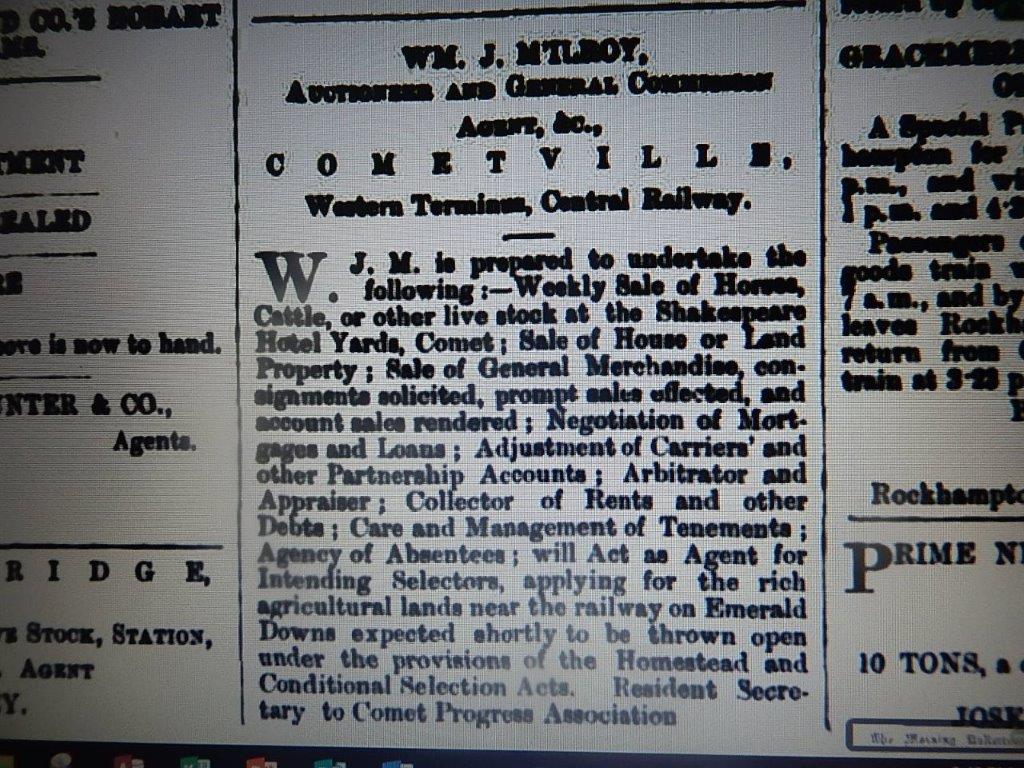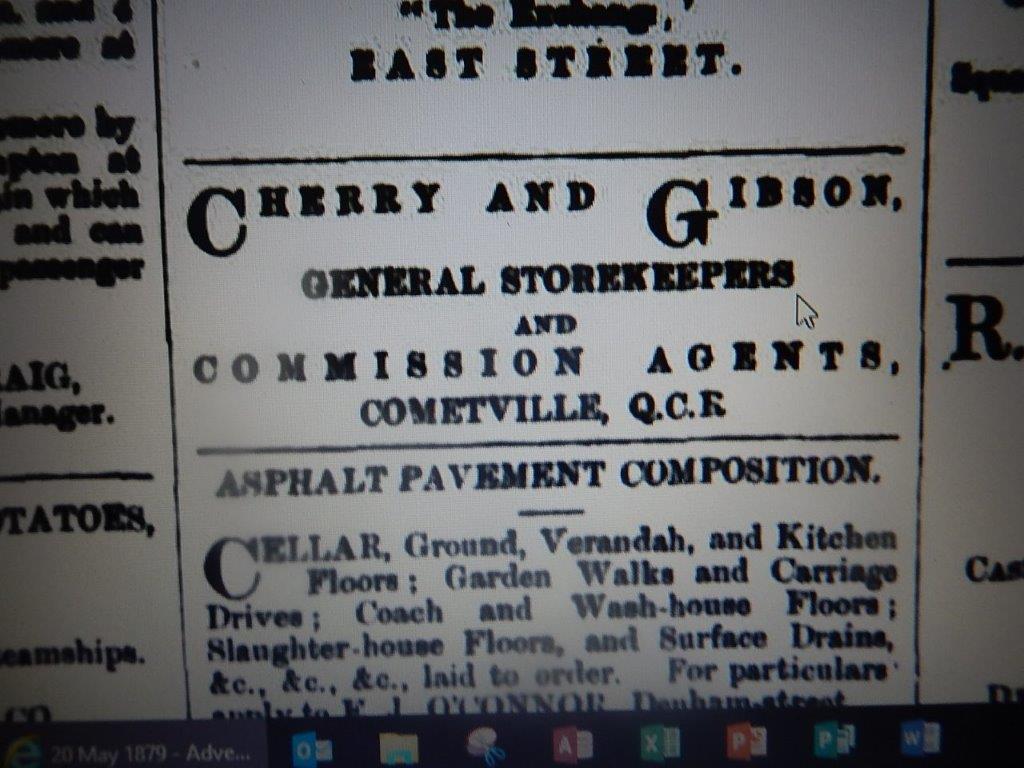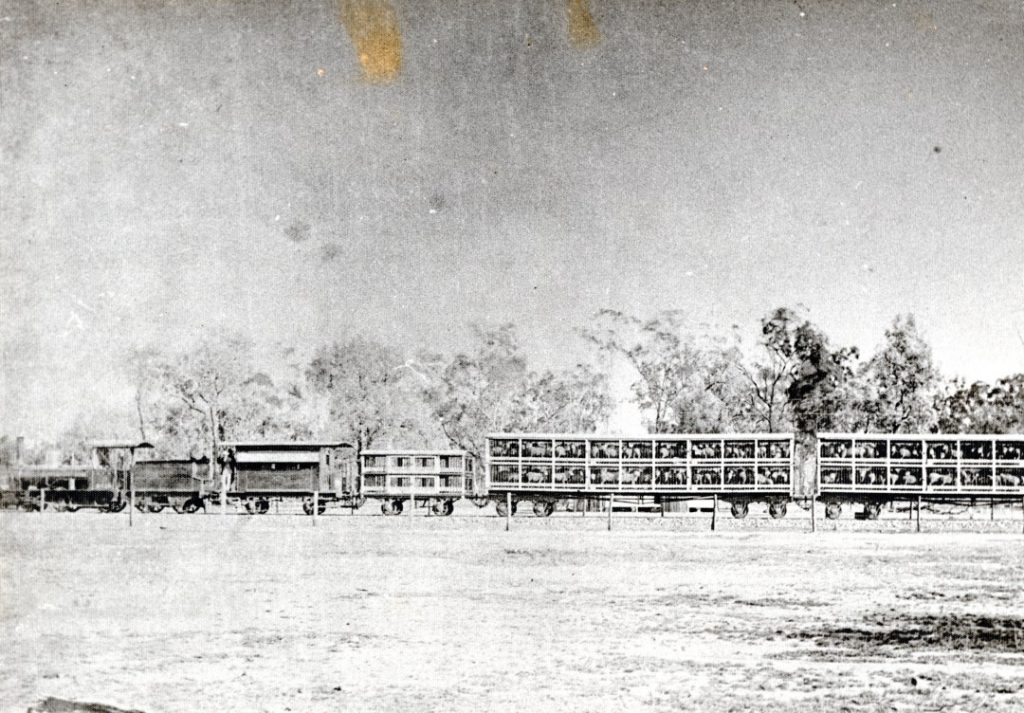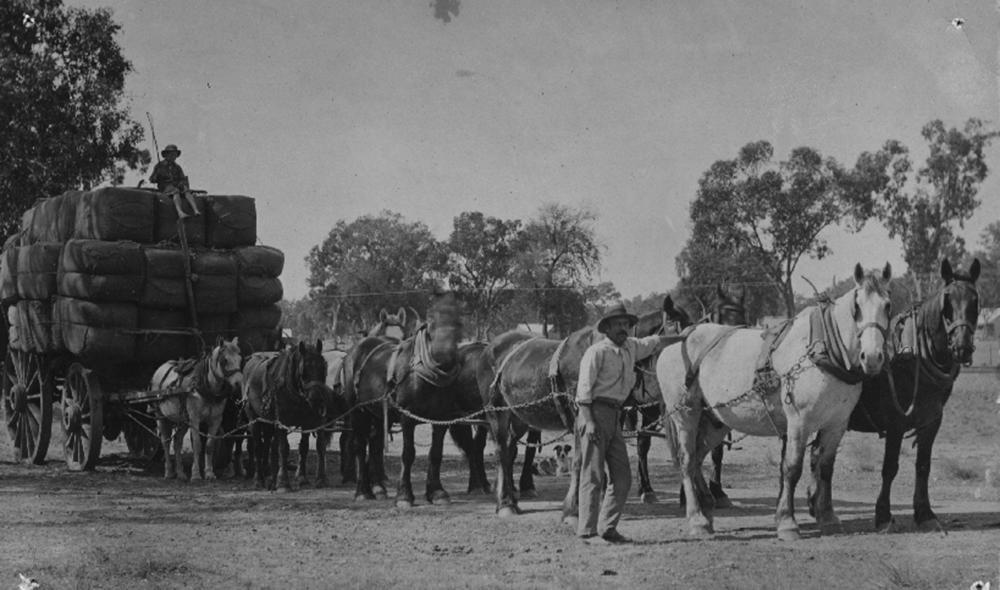Site 4
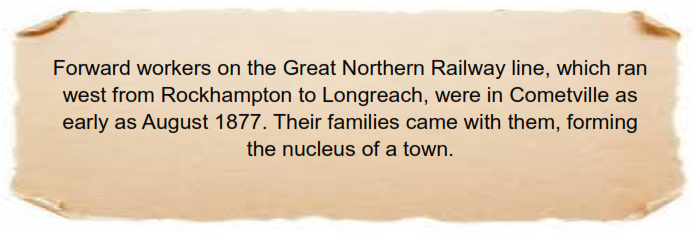

THE BIRTH OF A NEW TOWN
Can you imagine coming into a town where buildings were made from sheets of bark or slabbed timber? Looking at a map of Cometville in 1878, bark huts were quite numerous along the streets. Some buildings, such as the Comet Freemasons’ Temple, were made from corrugated iron. An occasional dressed timber structure added to the atmosphere of the frontier town.
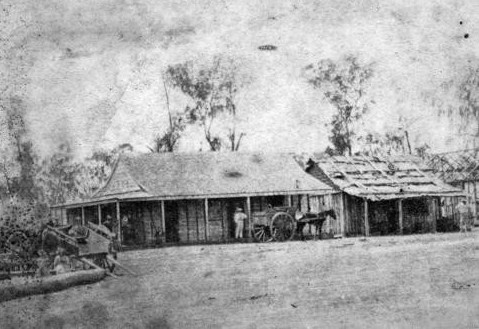
The sturdier structures would have been dismantled in the last town and brought forward on the ever-progressing railway line to the west. The railway workers pitched their canvas tents on any suitable piece of ground around the town.
The majority of the businesses and dwellings fronted a dirt road made dusty by the passing of wagons and drays pulled by horse or bullock teams. The busy road still had the stumps of felled trees rising from the dust or mud if it was raining.
This was Cometville in 1878, in which 1500 people called home for the short eighteen months that the Great Northern Railway stagnated here whilst workers constructed bridges over the Comet River and its two anabranches.
A CELEBRATION – RAILWAY OFFICIALLY REACHES COMETVILLE
The railway officially reached Comet on the 1st March 1878. A portion of the Dingo Railway Station was dismantled and re-erected in Comet for the official opening of the rail line. This building served the township for the next one hundred years.

Rail bed construction work was being done further ahead toward Emerald.
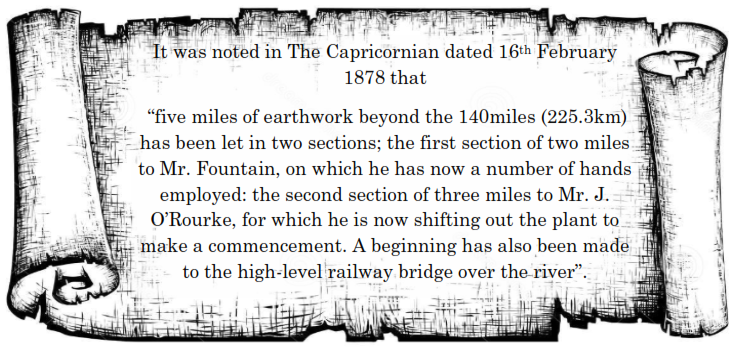
The surveyed line had to be cleared of timber and the rail bed formed with horse drawn scrapers. Sleepers and bridge timbers had to be cut from the surrounding area, then brought in by bullock dray to the work site, before the iron rails could be laid. Drays were preferred over wagons for carrying loads as they could travel over rough and uneven country.
It was said that 600 men worked on the railway construction in one capacity or another.

THE NEW TOWN SURVEYED
The town was surveyed in June that year by Willoughby Hannam, laying out the town plan in an orderly fashion. He allowed for a hospital reserve, botanic gardens, a cemetery, (although there was one already in use in Shakespeare Street), a site for public buildings, a recreation reserve and a school reserve.
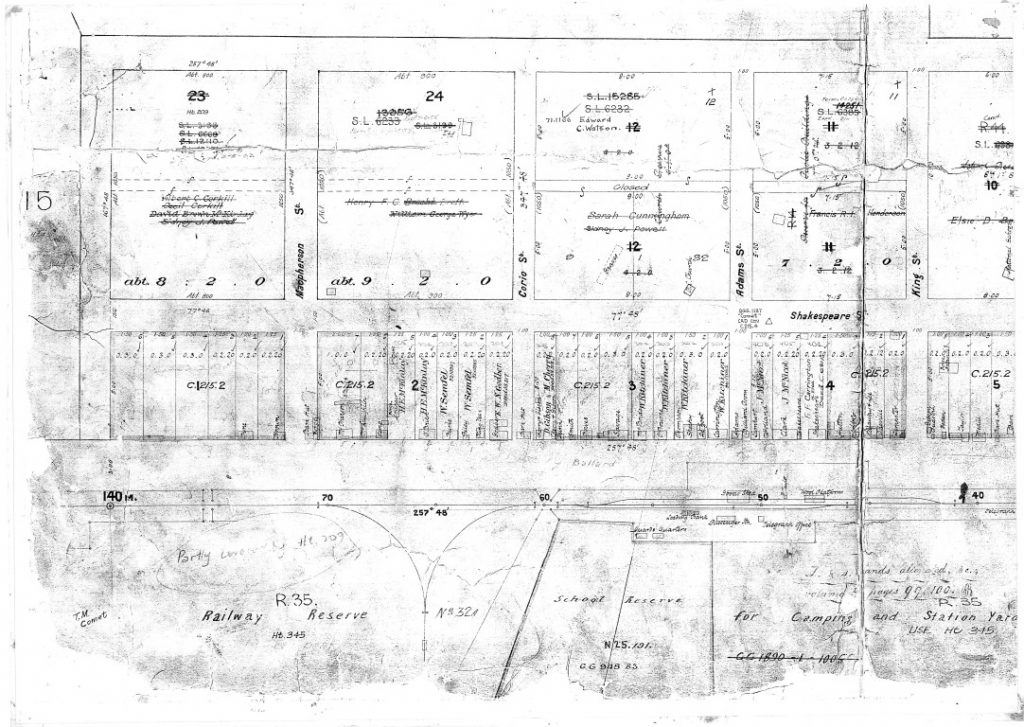
A BUSY TOWN
The main thoroughfare of the town, Ballard Street, was named after Robert Ballard, engineer-in-chief of the railway line project. Other streets were named McPherson (after the owner of Mac’s West End Hotel), Corio (an occupational lease to the north east of the town), Adams Street (named after the chap who owned a billiard room situated in the middle of this street, King Street (which is now closed), Cable Street (named after the Cable brothers who were carriers in the district), Tolmie Street (for the minister for lands at that time) and Shakespeare Street named after a local hotel owner). Macarthur Street ran parallel to Ballard Street.
The township comprised about thirty buildings which included five stores, eleven hotels, a blacksmith, baker, butcher, saddler and two churches – being Roman Catholic and Church of England. The United Protestant Church was also conducting services by 1880.
There was also a railway doctor, post and telegraph office, a chemist and the billiard room.
A Cobb and Co. coaching office was situated on Ballard Street.
THE BILLIARD ROOM
The billiard room was situated in the middle of the road in Adams Street. Here is a typical case of a business squatting on their chosen piece of ground regardless of where it was in the main thoroughfare before the town was surveyed.
AUCTIONEERS AND GARDENERS
There were auctioneers who held weekly stock sales. One auctioneer advertised weekly sales in the yard at the rear of Shakespeare’s Hotel. Two slaughterhouses operated outside the town. There were several Chinese gardeners growing vegetables, possibly near the river for easy access to water.
A Scandinavian fisherman and his family, living near the Mackenzie River, supplied fish to the townspeople. This family also ran a herd of goats.
HOTELS – SEVEN DAY TRADING
Some of the hotels in the town were little better than bark huts while others were more substantial being made from timber or corrugated iron. Most of the hotels fronted Ballard Street. These were Mac’s West End Hotel, The North Australian Hotel, Comet Hotel, Kellaway and Lees Hotel, Commercial Hotel, Rockhampton Hotel, Royal Mail Hotel, Shakespeare’s Hotel, All Nations Hotel, Railway Hotel and the Carriers Arms Hotel. The hotels were open for seven-day trading. Two of these hotels had small ballrooms for dancing.
Noted in the Morning Bulletin dated 23rd August 1878, that the Magistrate’s Court granted ‘licences for music and dancing to William Carrington and Fanny Clark for a period of one month, two nights in each week to date from 24th instant’.
A ROWDY TOWN

It leaves one to wonder exactly what these establishments were.
William Sheehy in Ballard Street advertised that he was a Wine and Spirit Merchant, storekeeper and butcher. Cherry and Gibson also situated on Ballard Street were storekeepers and commission agents.
WATER – A PRECIOUS COMMODITY
The water supply for the town came from the waterholes in the Comet River. These waterholes would have been shared with cattle, horses, goats and sheep. This caused considerable problems for the townspeople when the weather was dry.
A progress association was formed in the town on the 17th July 1878.This association requested that improvements be made to make life a little easier for the townspeople. Requests were made for a better water supply, school requisites, and a boat to carry the mail across the Comet River crossing when the water was too high for the mail coach. The sale of allotments in Comet and a money order office in the post and telegraph office with an assistant to deliver telegrams. It also requested that hotels be closed on a Sunday.

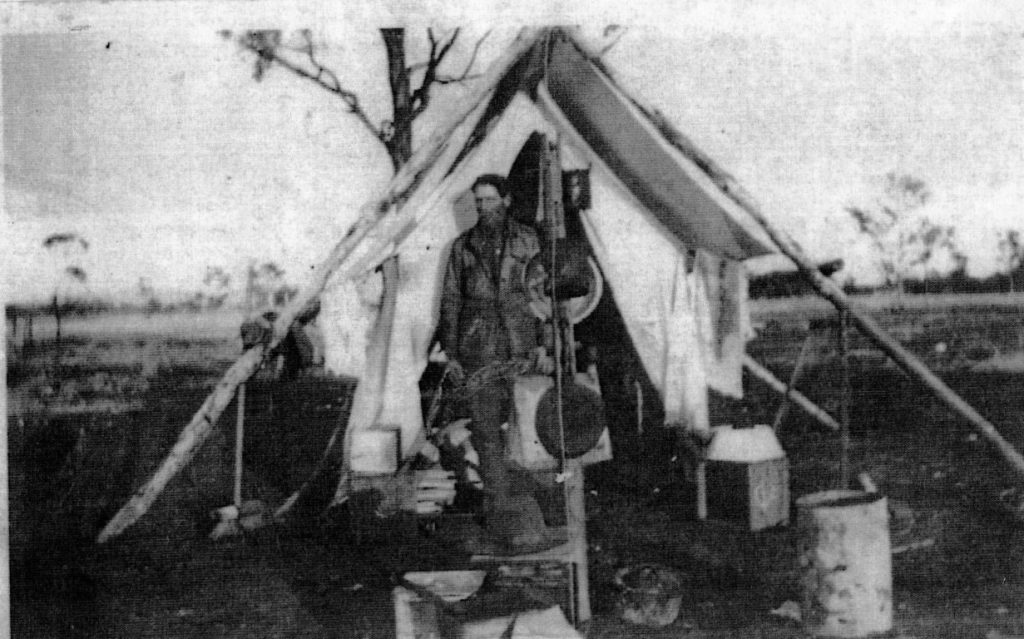
A MOVABLE SCHOOL
The school children were educated in a movable building which had come up the line from Dingo along with the teacher, Samuel Clark, in October 1877. This tent school could not cater for the seventy children attending. The Progress Association procured permission from the Department of Education for a new school to be built of local pine and hard timber and it was to have a bark roof. However, there was no assistant to help the school teacher to teach the seventy enrolled children.
MASONIC TEMPLE
The Comet Grand Lodge of Freemasons No. 28 had been established by Railway Engineer, Robert Ballard, along with other freemasons in Dingo. The dismantled temple came up the line by rail and was re-erected in the town. The two-storied structure was walled on three sides by corrugated iron; however, the front of the building was very ornately decorated with timber.
As the railway progressed westward, the Temple, which was beautifully furnished inside, was pulled down and re-erected six more times before coming to rest permanently in Barcaldine in 1886. In 1900, £720.0.0 ($1,440.00) was raised for a new masonic temple which was dedicated in 1901. It is still called the Comet Lodge.
THE SQUATTERS, JUMPERS AND MINDERS
The arrival of the first businessmen and women in 1877, saw them squatting on their chosen piece of ground. Later, when the land sales commenced it caused a lot of angst among those who had purchased land at the sales on the 15th October 1878. “Minders” were employed to protect their allotment from “jumpers” who occupied the ground and demanded payment to move.
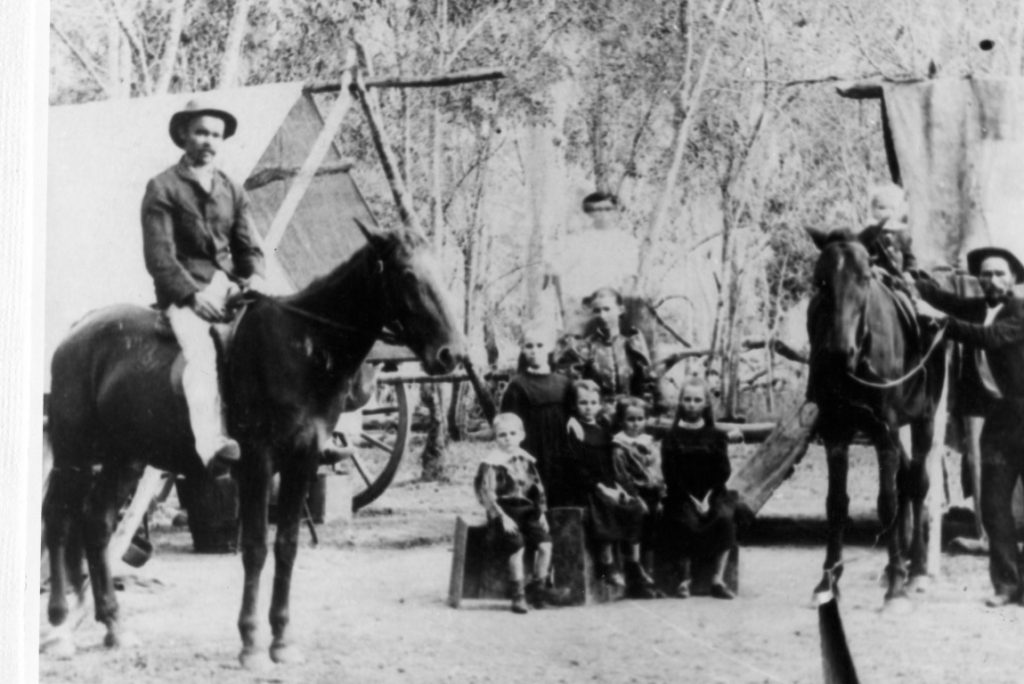
COURT OF PETTY SESSIONS
The first Court of Petty Sessions was held in Huston’s Royal Mail Hotel. The committee of the Comet Progress Association asked for a suitable building in the township to hold court sittings. The Court of Petty Sessions, Comet, was proclaimed by the Governor in Council on the 26th April 1878.
POLICE PRESENCE
A new police station and lockup was erected beside the new courthouse. Prior to this the police lived in two tents. Any prisoners awaiting trial were chained to a suitable log as there wasn’t a lockup.
ENTERTAINMENT
On a lighter note, the Capricornian of 20th December 1879, tells us that horse racing took place once a year and “that a merry-go-round was rejoicing the hearts of the juvenile population. Whilst it lightened the pocket of their parents”.




THE SPRINGSURE ROAD

Sixty-nine citizens from the Springsure district petitioned the government to have a road built from Comet to Springsure. At the Comet end, a road already existed for fifteen miles (24km) to Richardson’s wool storage shed. A deep waterhole on Minerva Creek, called Woolcamp, was the preferred camping site for the men with their teams of horses and bullocks. Woolcamp was situated on the cattle property “Adelong” south of Comet. The next thirteen miles (21km) was said to be light scrub and easily cleared to complete the road.
A NEW BRIDGE OVER THE COMET
A suitable timber bridge had to be constructed over the Comet River. The construction cost was £1,709.8.5 ($3419.65). The contract for the bridge was signed on the 30th April 1878. Prior to this, a low-level bridge situated a short distance downstream was expected to meet the needs of the Springsure traffic, however it was a very steep pull up the bank on the northern side of the river.
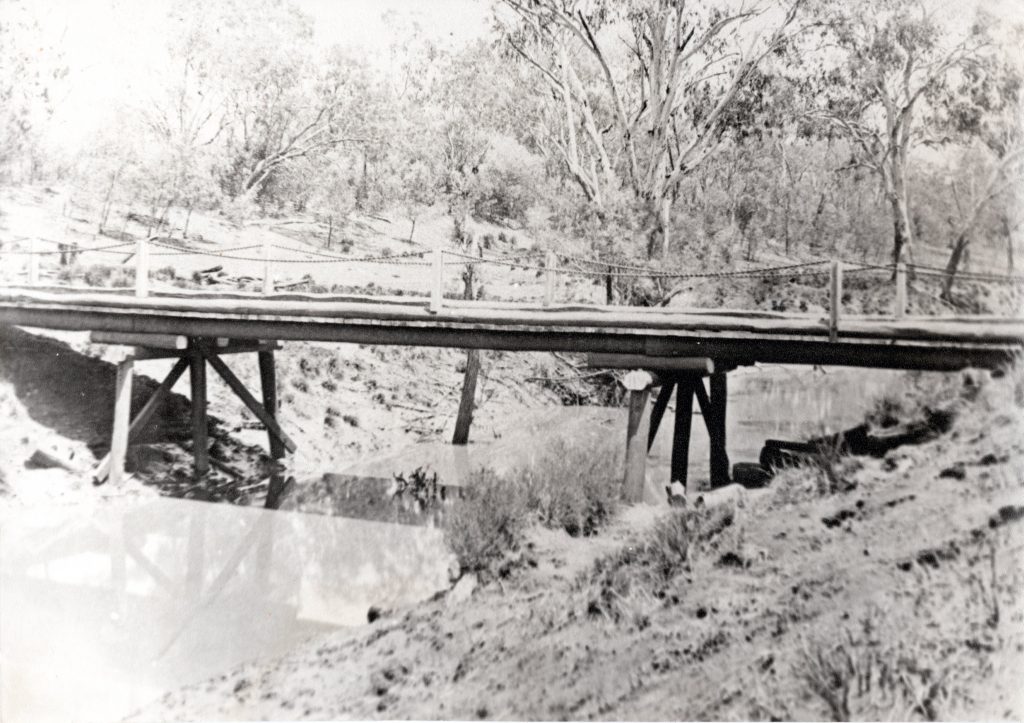
1. 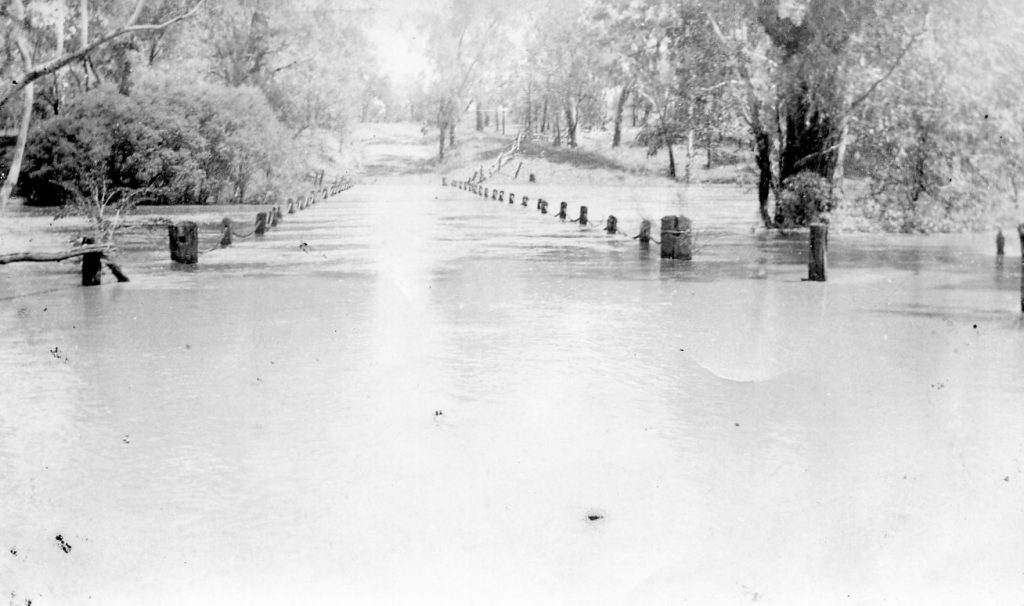
2.
2. Comet River Bridge under flood waters.
THE WOOL WAGONS AND DROVERS
Cometville saw many wagonloads of baled wool from the western districts delivered to the railway station for railing. Two huge wool storage sheds were constructed beside the railway line to receive the loads. Wagons carried the necessary supplies to the stations on their return journeys.
Drovers brought in large mobs of sheep to be trucked out to the coast. The Brisbane Courier newspaper reported that 5,000 sheep arrived from Coreena Station, Aramac, and were trucked to Rockhampton. These formed part of the first consignment of 20,000 sheep to Mr. William Patterson.
MAIL AND PASSENGER COACH
In 1879, Cobb and Co. started a passenger coach and mail service twice weekly between Cometville and Springsure. The coach left Comet on Sundays and Wednesdays, returning from Springsure on Mondays and Thursdays. Their depot was situated fronting Ballard Street, midway between King and Cable Streets. Paddock facilities and the coach shed were situated on the site of the present Comet River Showgrounds. This service was known as MS 108. The distance between the towns is 55 miles or 90 km. The coach driver was Charlie Hewson.
A LIVELY FRONTIER TOWN
It was published in The Capricornian on 7th September 1878 that copper from Copperfield near Clermont, which previously had been carted on the Broadsound Road to the port at Saint Lawrence, was now being brought to Comet by carriers, Messers Christian and Rivers, for railing out.
Altogether, Cometville was a very busy and lively frontier town.
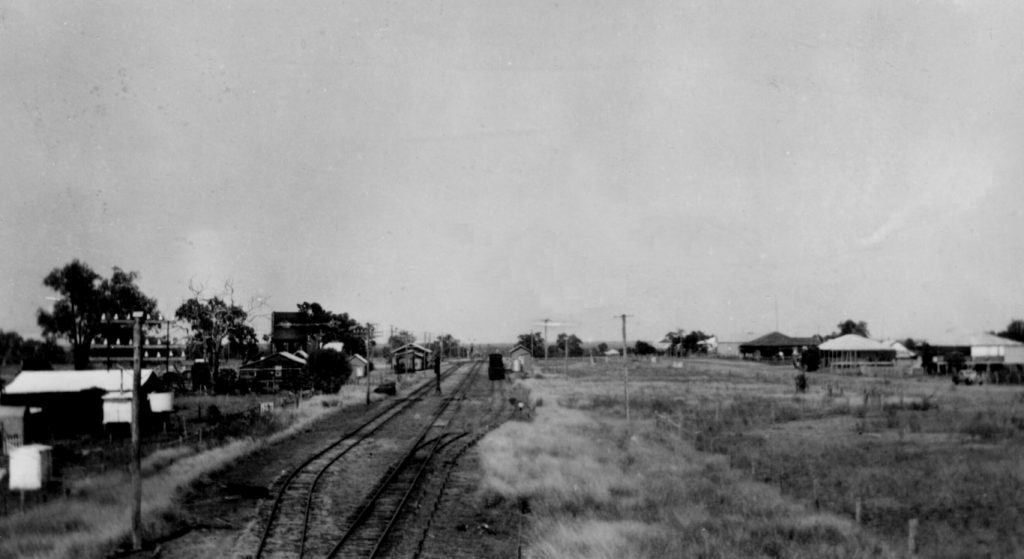
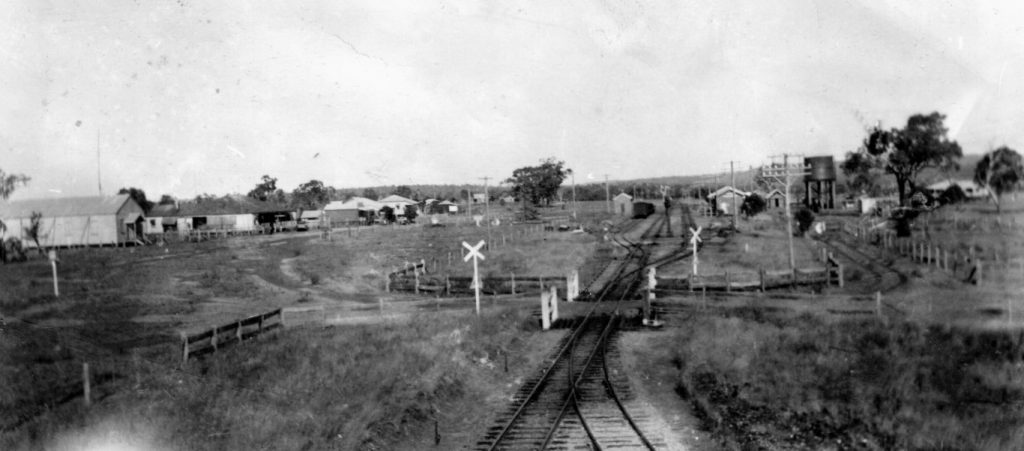
– Compiled by Rosemary McLeod, 2018.
– Photos: National Library of Australia; State Library of Queensland; Rosemary McLeod collection; Trevor Kemp collection.
– Video: Clementine Morawitz.
– Contact: cometales@gmail.com.au



